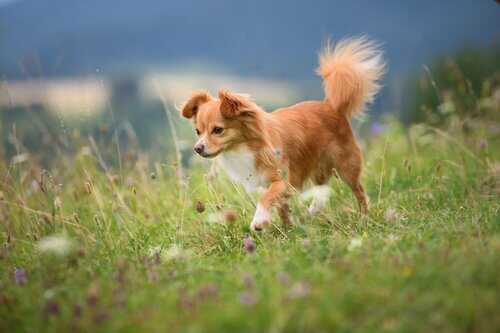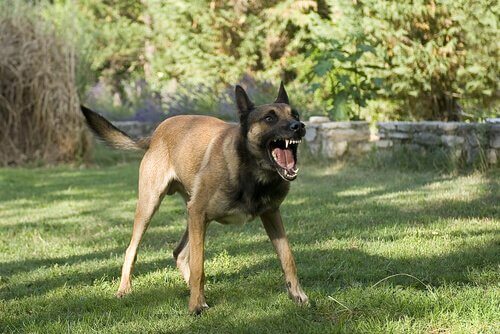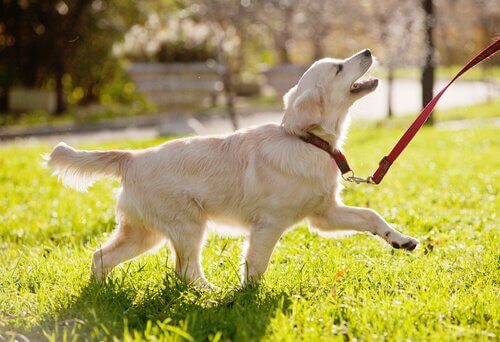What Do Your Dog's Different Tail Movements Mean?

A lot of pet owners ignore the meaning of their dog’s tail movements. However, the truth is that each of these movements means something and they can play an important role in your communication with your pet.
Some may be more important than others. In any case, it’s important to know what they mean so that we can understand our pet better. Also, it will help us take care of his needs.
The importance of the tail

Since dogs cannot communicate with us using words, they use their body language to ask for something or to tell us how they feel. Their tails play an important role in this because it’s one of the most expressive parts of their bodies.
They use it to communicate with us and with other dogs. Also, these movements release the pheromones that are found in their anal glands. This is another way that dogs communicate with each other.
So, now that we know this, let’s see what the most common tail movements are, and what they might mean:
The most common tail movements
You may be able to think of some tail movements that are very common for dogs to make, but there may be more that you hadn’t noticed. Here’s our list:
- Circular motions. When a dog raises its tail and makes circles with it in the air, it’s an unequivocal sign that he’s happy or that he wants to play. Don’t ignore this sign—play with him! It will strengthen the bond the two of you share.
- From side to side. If his tail is moving quickly from side to side, it can mean two things. The first possibility is that he’s happy or excited. For example, he might make this gesture when you get home from work. On the other hand, it might be a sign of anxiety or nervousness. If you are empathetic and try to understand how your dog feels about a certain situation, you’ll find it easy to distinguish between the two.
- Short movements. If he’s moving his tail from side to side in a very short manner, like the rhythm of a car blinker, then he’s preparing to attack. Additionally, if he also has his ears back and is showing his teeth, you should make a quick exit.

More dog movements…
- Raised tail. This is a sign of authority and he wants to make it clear that he’s the head of the pack. You should be careful if he makes this gesture when you’re scolding him or telling him to do something. This means that you didn’t train him well enough to understand that you’re the head of the pack, not him.
- Extended horizontally. If it isn’t tensed, it means the dog is interested in something. If, however, he does tense it, then he’s marking his territory and wants to make it known that nobody can go past him.
- Low tail. A low tail that’s not between his hind legs and that’s moving swiftly from side to side shows insecurity. There’s something in the environment that’s making your dog uncomfortable. This might be a person or another animal, and this is his way of telling you that he doesn’t feel comfortable.
- Relaxed tail. When his tail is relaxed, low and away from his legs it means that he feels calm, relaxed and at ease. He has inner peace.
- Between his legs. This is a sign that almost everyone knows. When a dog hides his tail between his legs it’s because he’s afraid and he feels threatened. In this situation, he’s also likely to seek protection by staying close to you.